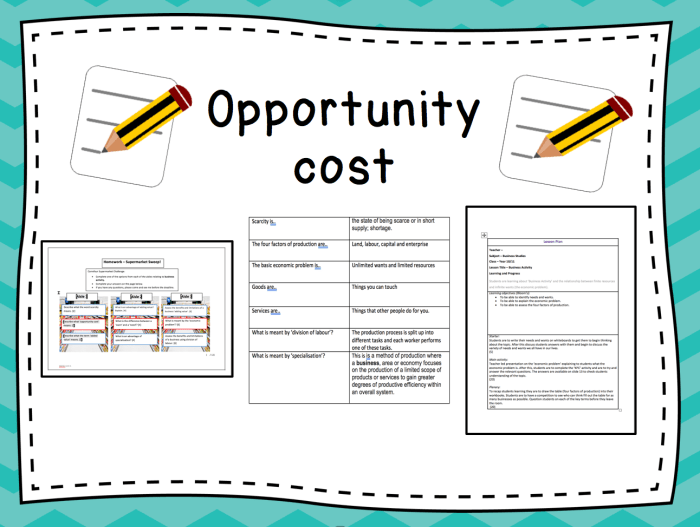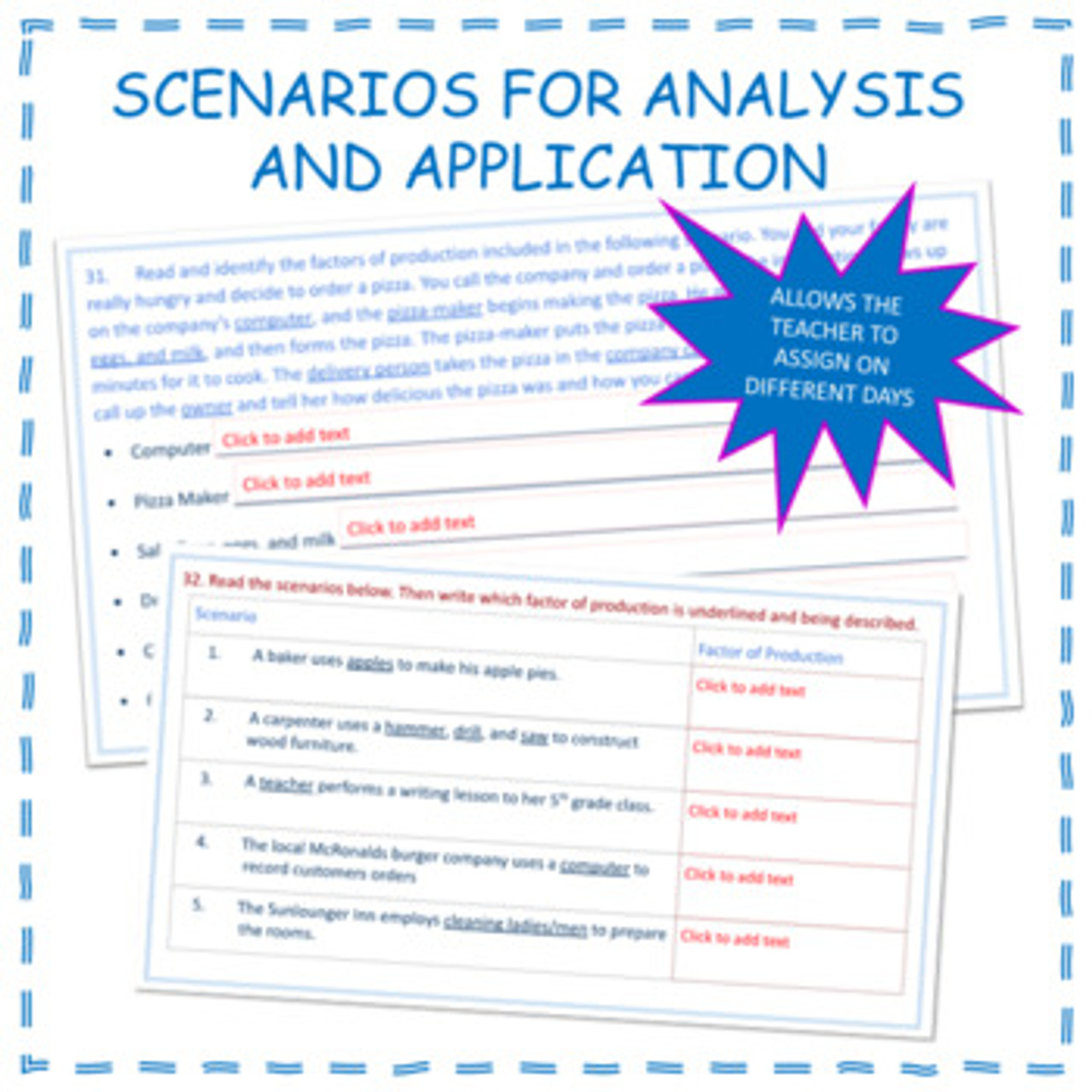Welcome to the ultimate resource for understanding scarcity and opportunity cost worksheet answers. This comprehensive guide will provide you with everything you need to know about this important economic concept, from its basic principles to its practical applications. Whether you’re a student, a business professional, or simply someone who wants to make better financial decisions, this guide has something for you.
In this guide, we’ll start by explaining the concept of scarcity and how it affects economic decision-making. We’ll then provide real-world examples of scarcity and its consequences. Next, we’ll discuss the relationship between scarcity and opportunity cost. Finally, we’ll provide a step-by-step guide to completing a scarcity and opportunity cost worksheet, along with examples of completed worksheets with explanations.
Understanding Scarcity and Opportunity Cost: Scarcity And Opportunity Cost Worksheet Answers

Scarcity refers to the limited availability of resources compared to unlimited wants and needs. It forces individuals and societies to make choices and prioritize resource allocation.
Real-world examples of scarcity include the limited supply of land, natural resources, and time. Scarcity can lead to competition, trade-offs, and the need for economic decision-making.
Opportunity cost is the value of the next best alternative foregone when a choice is made. It represents the cost of the choice in terms of lost opportunities.
Worksheet Answers: Analyzing Opportunity Costs
To complete the scarcity and opportunity cost worksheet:
- Identify the available resources and options.
- Determine the potential benefits and costs of each option.
- Calculate the opportunity cost by subtracting the value of the next best alternative from the value of the chosen option.
Example: If you have $100 to spend and can choose between a movie ticket ($20) or a new book ($30), the opportunity cost of buying the movie ticket is $30 (the value of the foregone book).
Applications of Opportunity Cost Analysis
Opportunity cost analysis is crucial in personal finance:
- Evaluating investment options.
- Making spending decisions.
- Prioritizing expenses and savings.
Businesses use opportunity cost analysis for:
- Evaluating project investments.
- Making production decisions.
- Optimizing resource allocation.
Limitations of Opportunity Cost Analysis
Opportunity cost analysis has limitations:
- It assumes that all alternatives are known and can be quantified.
- It may not account for qualitative factors or externalities.
- It can be difficult to accurately measure the value of some alternatives.
Advanced Concepts in Scarcity and Opportunity Cost, Scarcity and opportunity cost worksheet answers
Production possibility frontiers illustrate the trade-offs between producing different goods and services, highlighting the limits of production due to scarcity.
Technology and innovation can mitigate scarcity by increasing production capacity and creating new opportunities.
Scarcity and opportunity cost raise ethical and social considerations:
- Distributive justice: Ensuring equitable access to resources.
- Sustainability: Balancing resource consumption with future needs.
- Social welfare: Prioritizing the well-being of individuals and society.
Question & Answer Hub
What is scarcity?
Scarcity is the fundamental economic concept that resources are limited relative to human wants and needs. In other words, there is not enough to satisfy everyone’s desires.
What is opportunity cost?
Opportunity cost is the value of the next best alternative that you give up when you make a decision. In other words, it is the cost of the choice you did not make.
How can I use a scarcity and opportunity cost worksheet?
A scarcity and opportunity cost worksheet can help you to identify and evaluate the opportunity costs of your decisions. By completing a worksheet, you can see the trade-offs involved in different choices and make more informed decisions.


